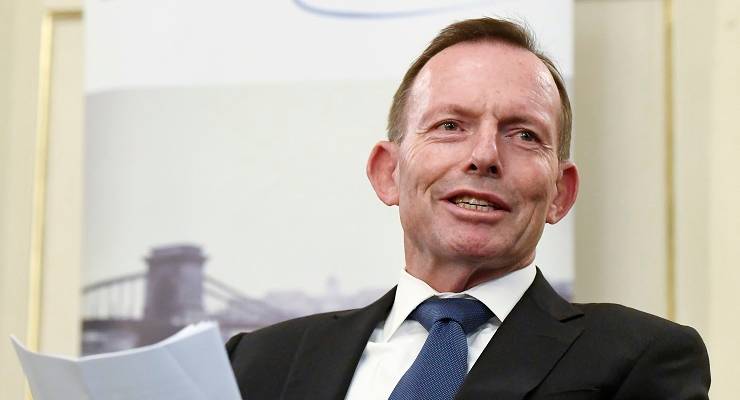
Tony Abbott — fierce protector of a woman’s duty to bear children and defender of the middle-class — has called on middle-class women to have more kids, saying the current fertility rates for this demographic are a “real problem”.
The former prime minister and, how could we forget, former minister for women, told audiences at the Centre for Independent Studies: “That is a real problem in every western country: middle class women do not have enough kids. Women in the welfare system have lots of kids. If you’re very wealthy you can afford to have as many kids as you want.
Abbott was speaking at the book launch of Restoring Hope: Practical Policies to Revitalise the Australian Economy, by his former chief economist Andrew Stone.
But how legitimate are Abbott’s claims? Is money the main reason why women in the workforce are having less kids?
Are middle-class women having less children?
The Australian Bureau of Statistics found in 2009 that women living in areas that made up the least socioeconomically advantaged quintile of the population had an average of 2.3 babies, per woman. The fertility rate gradually declines across each socioeconomic bracket, with women in the most-advantaged quintile of the population having an average of 1.5 babies, per woman.
But Australian women are, on average, having fewer children than 10 years ago; according to 2018 figures from the ABS, women are having 1.74 children per woman, the lowest birth rate since 2001.
The ABS have projected that the number of couples without children is expected to surpass the number of couples with children between 2023 and 2029.
But according to a 2013 study from Deakin University, the reasons for Australia’s declining fertility is not purely economic.
The study found reasons for childlessness in women included never wanting to have children, never being in the “right” relationship, or being in a relationship with a partner who didn’t want to have children.
Some parents are said to be reconsidering having children due to worsening climate change, either out of fear of what the future could look like for their offspring or because they see childlessness as a way of reducing their environmental footprint.
Assuming a woman’s place
Former prime minister Julie Gillard famously accused then-opposition leader Abbott of being the “very definition of misogyny in modern Australia”.
Abbott’s concern for middle-class women’s declining fertility rates fits into a history of assuming a woman’s desires and function in society.
He told Today in 2014 that his biggest achievement for women was repealing the carbon tax because “as many of us know, women are particularly focused on the household budget and the repeal of the carbon tax means a $550 a year benefit for the average family”.
He also famously failed to pass a widely-criticised policy that would have provided six months of paid parental leave for women earning up to $150,000 per annum at their normal wage, and $75,000 for women earning over $150,000.
As opposition leader, he mounted a case against the proposed carbon tax, claiming that “what the housewives of Australia need to understand as they do the ironing is that if they get it done commercially it’s going to go up in price and their power bills when they switch the iron on are going to go up”.
Abbott told sex discrimination commissioner Kate Jenkins to “pull your head in”, after the Australian Human Rights Commission suggested the Commonwealth government could have gender quotas. Speaking to 2GB’s Ray Hadley, Abbott said such an initiative “sounds like it’s just anti-men”.
And finally, on the subject of fertility, Abbott said in 2004 that abortion is “the easy way out” for women, but that “it’s hardly surprising that people should choose the most convenient exit from awkward situations”.








Those bedrooms’d be white right?
More proof that Abbott’s brain is in his burley smugglers.
And we all know what was his personal response when he only THOUGHT he had done the job. A man of great courage when actually faced with the situation.
Behind Abbott’s comment is the assumption that middle-class people have more intelligent and economically useful children than working class people. And his mate Bolt slams the elitists.
My daughter’s partner is the son of a wharfie and has a Masters in Maths. Meanwhile two of some hotshot lawyer’s private school educated kids in Melbourne are in prison for assault occasioning serious bodily harm.
It was Barry Humphries who gave a speech at Geelong Grammar 30 years go with the title “those who missed the clink”. Try the comparison between white collar crime and private schools.
Again and again the Credlin-Abbott lie about a “carbon tax” is repeated even in Crikey. Credlin herself has admitted that they successfully portrayed the carbon price legislation as a tax when it was no such thing.
Two questions.
1. Why are we wasting ones and zeros on this irrelevant individual?
2. Whatever happened to the word ‘fewer’? Don’t they teach the difference between less and fewer these days?
I fully agree on both issues.
Probably do teach it, but too many didn’t care and didn’t listen.
Surely if Abbott is concerned about lower income women having more babies and them being a burden on welfare funding, the thing to do would be to fund a world-class public education system and break down discrimination, so that these kids would have the opportunity to succeed and earn more than their parents. Or is education funding only good for keeping poor people in their place and easing the path through life of the kids of the rich?